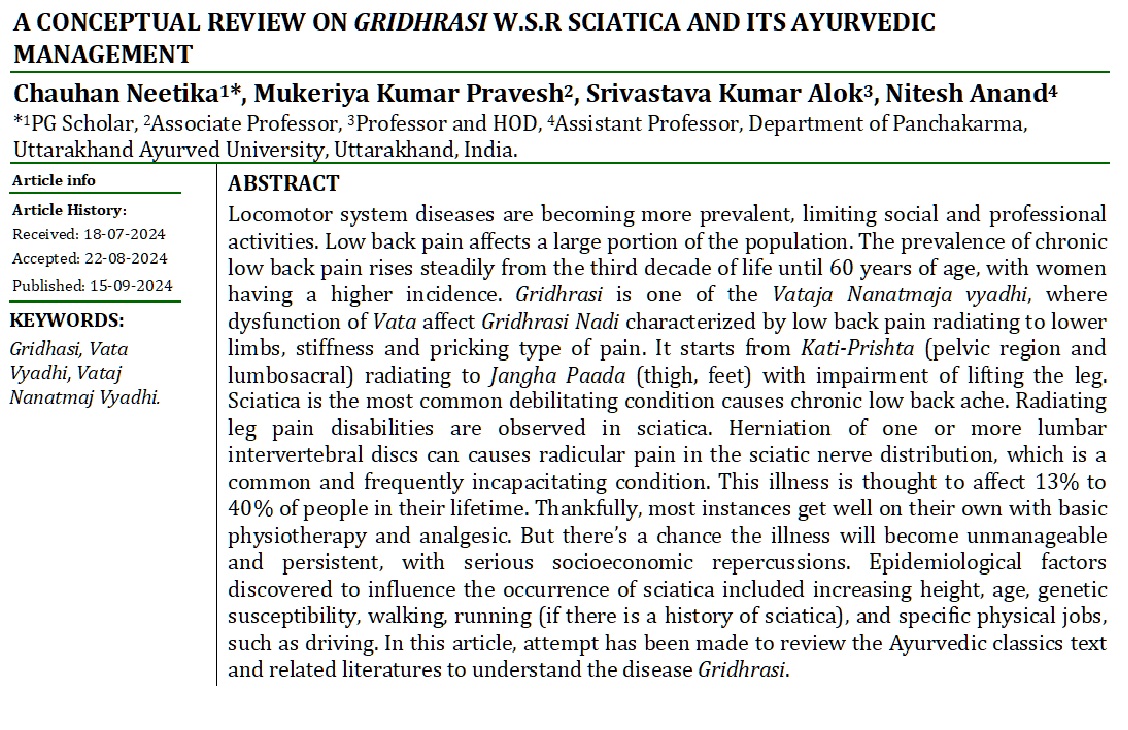A Conceptual Review on Gridhrasi w.s.r Sciatica and its Ayurvedic Management
Abstract
Locomotor system diseases are becoming more prevalent, limiting social and professional activities. Low back pain affects a large portion of the population. The prevalence of chronic low back pain rises steadily from the third decade of life until 60 years of age, with women having a higher incidence. Gridhrasi is one of the Vataja Nanatmaja vyadhi, where dysfunction of Vata affect Gridhrasi Nadi characterized by low back pain radiating to lower limbs, stiffness and pricking type of pain. It starts from Kati-Prishta (pelvic region and lumbosacral) radiating to Jangha Paada (thigh, feet) with impairment of lifting the leg. Sciatica is the most common debilitating condition causes chronic low back ache. Radiating leg pain disabilities are observed in sciatica. Herniation of one or more lumbar intervertebral discs can causes radicular pain in the sciatic nerve distribution, which is a common and frequently incapacitating condition. This illness is thought to affect 13% to 40% of people in their lifetime. Thankfully, most instances get well on their own with basic physiotherapy and analgesic. But there’s a chance the illness will become unmanageable and persistent, with serious socioeconomic repercussions. Epidemiological factors discovered to influence the occurrence of sciatica included increasing height, age, genetic susceptibility, walking, running (if there is a history of sciatica), and specific physical jobs, such as driving. In this article, attempt has been made to review the Ayurvedic classics text and related literatures to understand the disease Gridhrasi.
Downloads

Copyright (c) 2024 International Journal of Ayurveda and Pharma Research

This work is licensed under a Creative Commons Attribution-NonCommercial-ShareAlike 4.0 International License.






